
There is so much training knowledge out there these days that often it's hard to get to the bottom of what you should do and why you should do it. This is before you even try and get your head around levels of intensity and how often you should follow these various training methods.
In the years that I've been working as a coach, I've seen trends come and go and methods come in and out of fashion. In the end though, it's some of the most basic, foundational aspects of training that will get you 90% of the way. Most climbers would do themselves a huge favour by tuning out some of the "noise" that they see on social media and on the Internet generally to focus on the fundamentals with quality, in the appropriate quantity and with the correct rationale.
Over the course of the next 4 articles, I'm going to break your training season down into 4 key areas:
Endurance
Power Endurance
Strength and Power
Conditioning & Mobility
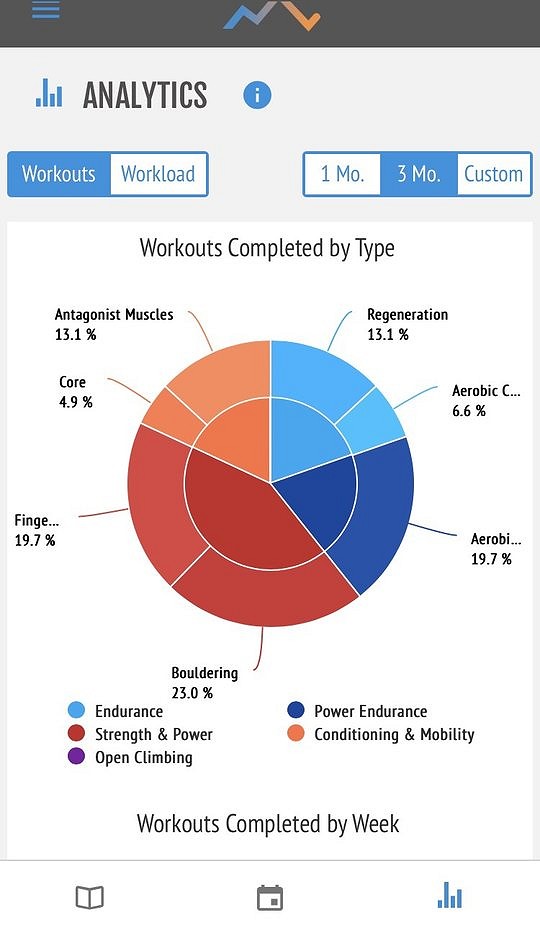
The reason for categorising in this way is to take you through aspects one at a time and use the backdrop of a new and free training app that we've been working on at Lattice, called Crimpd. Anyone can download it to use on iOS or Android and we're really keen to give everyone out there a taste of what training feels like in a simple format and with no cost. I hope this sounds appealing and straightforward!
Endurance
What is it?: In the simplest sense, the endurance that you have as a climber is your ability to climb constantly at a low-to-moderate level for durations over 1 minute. This will be climbing that features moves that are a long way away from your maximum bouldering level and is highly correlated with your route climbing ability ie. the best route climbers have a good level of endurance. In addition, it's highly related to your ability to recover on holds and in rests. It also has an effect on how quickly you get pumped on a route.
It's useful to further break down endurance into two categories: "aerobic capacity" and "regeneration."
Aerobic capacity: can be thought of as a more intense type of endurance training and creates changes in the physical structures and metabolic processes in your muscle
Regeneration: is more akin to recovery activity that's perfect for rest days or at the end of long sessions.
Why do them? If you're able to train your muscles to improve their aerobic energy production then you'll see obvious results in your grade! You can go for longer, you can climb at harder grades without getting pumped and it also improves your power endurance further down the line. Secondary to this, the regeneration training will improve your recovery rates and also increase the amount of climbing training that you can handle over the years. We really can't understate how important regeneration training is for both boulderers and route climbers.
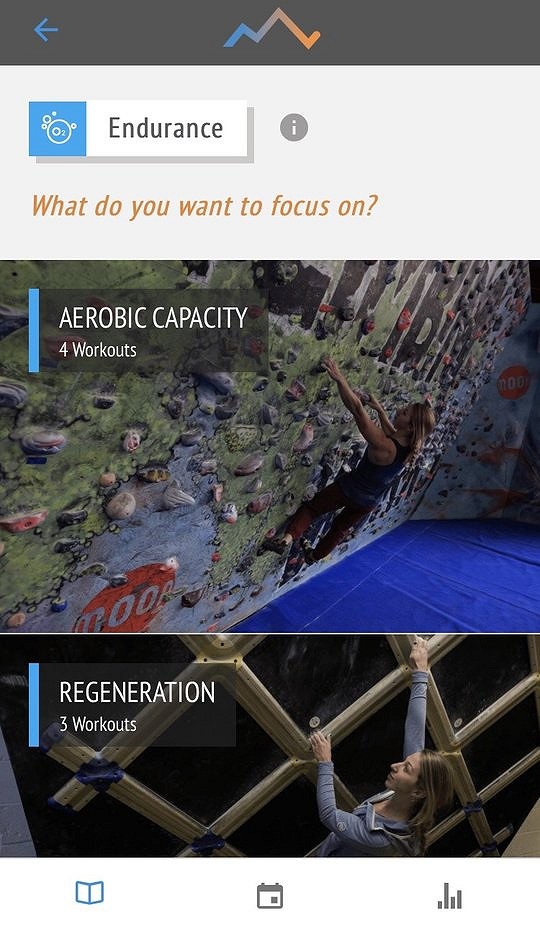
How to train aerobic capacity
Let's take an example workout from the app, which is 1 on 1 off. This session is one that sets the climber the task of climbing intervals that are just one minute long and at an intensity that is around two grades under your onsight.
1 set of 10 reps.
Each rep is 1 minute
Rest between each rep is 1 minute
Grade is 2 grades below onsight
Focus points
The grade must be below your onsight. This gives you a high chance that the intensity is low enough to be an aerobic stimulus and that you won't train anaerobically.
Pump level is only high at the end of the session.
For this session, it's recommended that you choose terrain that is varied - don't always do it on the same size of hold, either. It works extremely well on bouldering walls, top-ropes and in lead climbing!
How to train regeneration:
The focus of regeneration workouts is to assist in physical recovery from more intense training and also improve localised blood flow. If you get the intensity correct then it can be done on rest days or at the end of hard, exhaustive training sessions.
An example of this would be a session found in the app called "Continuity 5x3" which can be performed on a bouldering wall, roped wall or even a very easy foot-on campus board.
3 sets of 1 reps.
Each rep is 5 minutes
Rest between each rep is 3 minutes
Grade is at least 4 grades below onsight
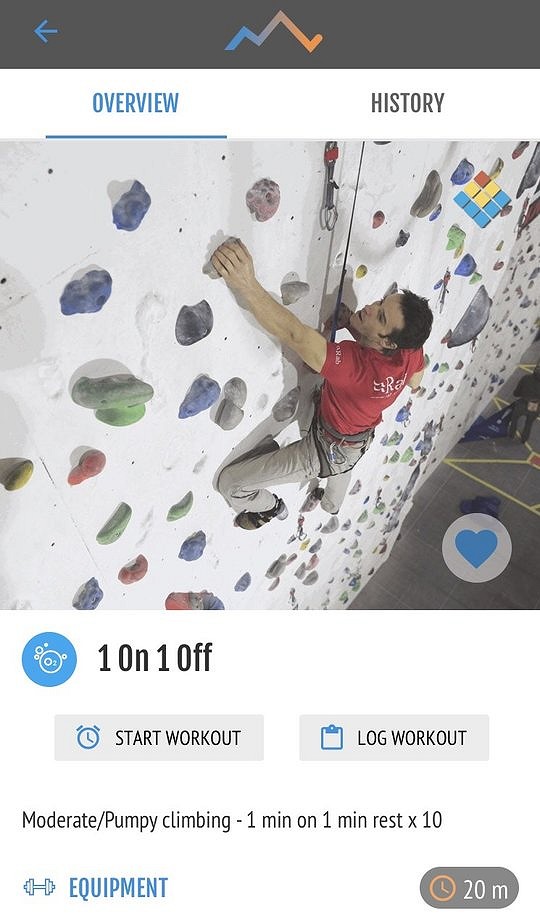
Focus points
The grade must be a long way below your onsight. As a guide, you should play it safer than you think and the session must feel extremely easy – so easy that you could switch off from the climbing and chat to someone whilst doing it!
Pump level is extremely low or non-existent. If you feel zero level of discomfort that is absolutely perfect.
Structure for boulderers vs route climbers
The key knowledge here is that this type of training is extremely beneficial to both boulderers and route climbers! The fact that you're stimulating the forearm muscles to work aerobically is a great thing and the physical, technical and psychological benefits are long-term beneficial to all climbers.
As a very rough guide, we would expect boulderers to do only 25-50% of the endurance training of a route climber and typically at lower grades. It's really important to get this aspect right as both specialisations have different physiological demands. A route climber training three times a week should include at least 2 sessions a week that work an element of endurance and a boulderer would do at least 1 session.
Summary
Endurance training is a localised aerobic form of training that is low intensity.
Training and performance are not the same. You can train in relatively short blocks (for example 1 minute) and if done correctly, this will allow you to "perform" on blocks of significantly longer than 1 minute.
Your training should take into account your specialisation, whether it is bouldering or route climbing. Importantly, boulderers should do less of it and at a slightly lower intensity.


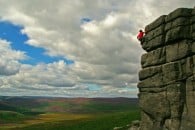



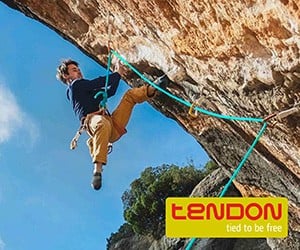









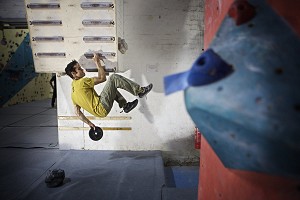
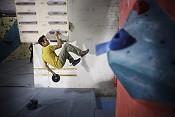
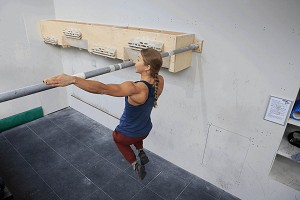
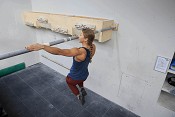
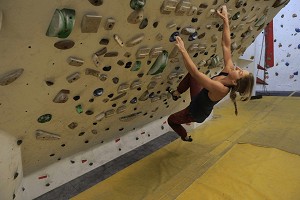
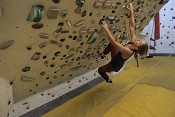
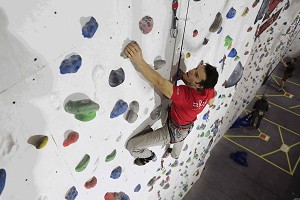

Comments
Thanks for this and the App. Needing to plan a training routine for winter. This will be a great help.
Ask away! Tom will be here for the next two hours...we hope!
In pure endurance sports (e.g. running, cycling, rowing etc) the scientific consensus has settled around an 80/20 approach to training with 80% of work being easy (just below LT1) and 20% being hard (generally above LT2), even for athletes who are competing in events as short as 4 minutes (e.g. individual pursuit in track cycling), the theory being that low intensity and high intensity work build endurance through different pathways and you can do a huge amount of low intensity work and still recover pretty easily.
Ignoring anaerobic work for the moment the equivalent approach for maximising endurance (e.g. for long trad / sport routes) in climbing would be 80% ARC training and 20% aerobic capacity & aerobic power training (along with supplemental strength and conditioning work). Does this work for climbing or is there little point in doing large volumes of low intensity training like I do for running / cycling?
Question on combining different types of endurance training: what's the impact of combining regeneration and aerobic capacity into the same workout (outside of using regeneration to warm up / warm down)? If I'm running or cycling I'd typically do a low intensity or high intensity session rather than a combined session of say 1hr easy then intervals, then another 1hr easy. Does the same apply for climbing? Obviously more time intensive to split the workouts up but will it give you better results? And if you are combining them is it better to do a block of regeneration first then aerobic capacity or visa versa (outside of warmup / warmdown)?
Hi Phil this is a good question and one at present that there isn't a definitive answer for. There really aren't anywhere near enough intervention studies/research projects in climbing and mostly our conclusions in the industry are still being based on experience and intuition*. In terms of the models that we've used with climbers over the years, we've had much better results from using polarised endurance training, where we eliminate that middle ground that operates around the lactate threshold.
With reference to your question about whether the very high volumes of low intensity training are useful for you, then this really comes down to being objective about your own physical profile and how this matches up with your goals. Just because the science says that it's great to train high vol, low intensity doesn't necessarily means a single individual needs to do that if their localised aerobic performance is already above what's required on the route OR that there are other elements that are much more more important to work on!
* I'd like to say that after a number of years of working with a very broad range of climbers and handling thousands of pieces of data we've got a solid grasp of what is and isn't effective.
Quoting:
In pure endurance sports (e.g. running, cycling, rowing etc) the scientific consensus has settled around an 80/20 approach to training with 80% of work being easy (just below LT1) and 20% being hard (generally above LT2), even for athletes who are competing in events as short as 4 minutes (e.g. individual pursuit in track cycling), the theory being that low intensity and high intensity work build endurance through different pathways and you can do a huge amount of low intensity work and still recover pretty easily.
Ignoring anaerobic work for the moment the equivalent approach for maximising endurance (e.g. for long trad / sport routes) in climbing would be 80% ARC training and 20% aerobic capacity & aerobic power training (along with supplemental strength and conditioning work). Does this work for climbing or is there little point in doing large volumes of low intensity training like I do for running / cycling?